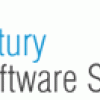![]()

21st Century Software Solutions, Hyderabad
Andhra Pradesh India(IN)
: Institute
Write a Review Claim Your Ownership
We build client learning programs using a broad collection of e-Learning, e-Reference, classroom materials, and blended learning solutions that drive business results. Our online courses range from business skills, to workplace compliance and IT training. For proprietary learning needs, 21st Century Software Solutions partners with clients to design and develop custom learning programs.
21st Century Software Solutions delivers learning solutions through custom branded learning portals with our KnowledgeHub learning management system, or can host e-Learning courses via our ContentHub delivery system. We also offer worldwide classroom materials fulfillment, and support services. Find out how you can maximize your return on investment in learning with 21st Century Software Solutions.
Course Details
Course
Business Intelligence: Overview
Other Information
Course Fee: Not Mentioned
Course Duration: Not Mentioned
Placement Provided: No
Course Details
Course
Other Information
Course Fee: Not Mentioned
Course Duration: Not Mentioned
Placement Provided: No
Course Details
Course
Other Information
Course Fee: Not Mentioned
Course Duration: Not Mentioned
Placement Provided: No
Course Details
Course
ORGANIZATION MANAGEMENTOther Information
Course Fee: Not Mentioned
Course Duration: Not Mentioned
Placement Provided: No
Course Details
Course
IntroductionOther Information
Course Fee: Not Mentioned
Course Duration: Not Mentioned
Placement Provided: No
Course Details
Course
Enterprise Structure-WMOther Information
Course Fee: Not Mentioned
Course Duration: Not Mentioned
Placement Provided: No
Course Details
Course
21st Century SAP HANA Training Synopsis:
Through a combination of presentations and hands-on lab work, the students will go through a complete SAP HANA implementation project, including installation, configuration, deploying agents, protecting applications, maintaining, and troubleshooting.
Introduction
• Introduction to SAP HANA
• SAP In-Memory Strategy
• HANA compare to BWA
Look &Feel
• In-Memory Computing Studio
• Administration view
• Navigator View
• System Monitor
• Information Modeler
Architecture
• Architecture Overview
• MCE and Surroundings
• Row Store
• Loading data into HANA
• Data Modeling
• Reporting
• Persistent Layer
• Backup & Recovery
Data Provisioning
• Replication Server
• Replication Process
• Replication Architecture
• Data Services
• SAP BODS and HANA
• Basic Data service Connection types
• New to Data services 4.0
• Full Extractor though ODP
• Configure Import server
• Create and execute a Data Service Job to Populate HANA
Modeling
• Purpose of Information Modeler
• Levels of Modeling in SAP HANA
• Attribute Views
• Analytic Views
• Calculation Views
• Export & Import
Reporting
• HANA, Reporting Layer
• Connectivity options
• Business Objects BI 4.0
• Business Objects BI 4.0 Explorer
• Business Objects BI 4.0 Enterprise
• Crystal Reports via ODBC/JDBC Connections
• Others & MS Excel
User Management
• Creation of Users
• Creation of Roles
• Creation of Role Hierarchy
• Assignment of Users to Roles
• Authentication
• IMCE Authorizations
Other Information
Course Fee: Not Mentioned
Course Duration: Not Mentioned
Placement Provided: No
Course Details
Course
Other Information
Course Fee: Not Mentioned
Course Duration: Not Mentioned
Placement Provided: No
No Comments Posted
- Atos IT Solutions and Services Pvt Ltd, Hyderabad
- INNOVINIT SOLUTION , Hyderabad
- Tespa Infotech, Hyderabad
- A2Z ONLINE TRAINING, Hyderabad
- AcuteSoft Solutions India Pvt Ltd, Hyderabad
- Pedant Softech, Hyderabad
- Global Education, Hyderabad
- Srihitha Technologies, Hyderabad
- Big Classes, Hyderabad
- Mentors Inn, Hyderabad
- Ecorptrainings (ECT), Hyderabad
- SR Technologies, Hyderabad
- CyberTek, Hyderabad
- Bharath Trainings, Hyderabad
- Revanth Technologies, Hyderabad
- Learn In Technologies , Hyderabad
- NIIT Ltd, Hyderabad
- Pragna Technologies, Hyderabad
- Lithan Genovate , Hyderabad
- XploreSap India Pvt. Ltd., Hyderabad
- AppsTechnologies, Hyderabad